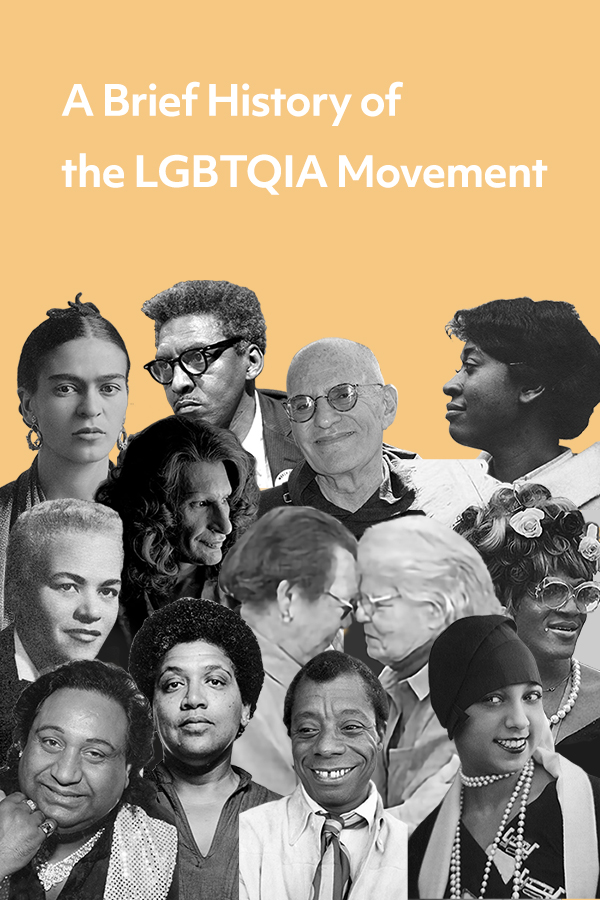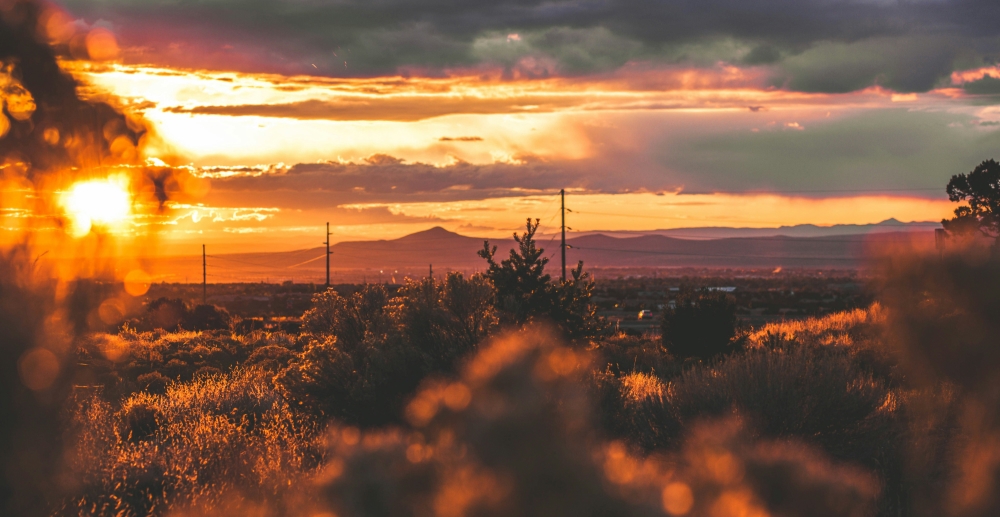Key Historical Facts of the LGBTQIA+ Movement
Perhaps one of the most epic social movements of our time, the LGBTQIA+ rights movement has demonstrated the fearless activism of people fighting for civil rights. Their activism not only emancipated those identifying as gay or lesbian, but also paved the way for critical movements that form the foundation of the recovery movement, such as harm reduction.
In this blog, we’ve provided a bird’s-eye view of the key historical events in the LGBTQIA+ movement, which can be categorized into 5 main areas:
- The Enlightenment Era
- Emergence of the LGBT Movement
- The Homophile Movement
- The Gay Liberation Movement
- LGBTQ+ Rights Movement
We’ve listed some important historical features of each era. Of course, this is really a snapshot of what has been a momentous civil rights movement for people who identify within the LGBTQIA+ spectrum. We cannot include every single moment, but have aimed to include as many as possible.
Enlightenment Era
The enlightenment era spanned the 18th century, a time when same-sex conduct was considered socially unacceptable. However, “cross dressing” was considered acceptable within plays, such as in William Shakespeare.
We can date gay rights activism back to this era with a couple of notable events:
- 1749: Thomas Cannon published the first defense of same-sex relationships, in Ancient and Modern Pederasty Investigated and Exemplify’d
- 1785: Jeremy Bentham sought law reform that at the time punished acts of “homosexuality” with death
Emergence of the LGBT Movement
In the late nineteenth and early twentieth centuries, social attitudes towards “homosexuality” grew more hostile and were increasingly criminalized. Key events during this era include:
- 1885: the Labouchere Amendment criminalized same-sex conduct among males and was used to convict Oscar Wilde in 1895
- 1924: Henry Gerber created the Society for Human Rights in Chicago.
- 1928: English poet Radclyffe Hall published lesbian-themed novel, The Well of Loneliness.
- 1938: Gay prisoners of war were labeled with pink triangles in Germany and sentenced to concentration camps
Homophile Movement (1945-1969)
Great political activism for the LGBTQ community began during the homophile movement that arose between 1945 and 1969. “Homophile” was a term coined by a splinter group formed from the Mattachine Society. It was used as a rejection of the term “homosexual,” which they believed pathologized or medicalized same-sex relationships. Homophile was chosen to express the notion of same-sex (homo) love (philia).
Key events during this era include:
- 1948: Alfred Kinsey published Sexual Behavior in the Human Male
- 1947-1957: The Lavender Scare, an anti-LGBTQ movement
- 1951: Harry Hay Founded the Mattachine Society
- 1955: Del Martin & Phyllis Lyon formed the Daughters of Bilitis (DOB), the first lesbian political organization
- 1955: Christine Jorgensen underwent gender-affirming surgery
- 1956: DOB published a magazine for Lesbians, The Ladder
- 1961: Illinois decriminalized “homosexuality”
- 1965: Dr. John Oliven published a book coining the phrase transgender
Gay Liberation Movement (1969-1974)
The gay liberation movement era is what most folx recall when they think of Pride. Most commonly, people might refer to the Stonewall riots. In reality, it was much more than that.
The gay liberation movement was a time when an underground movement became publicly visible, and when the rebellious counterculture began attracting national media attention. This counterculture was about rejecting heteronormativity and fighting the exclusion of gay and lesbians. This movement was punctuated by two highly visible events:
- Gay bar owners reported their history of being extorted by the police to the district attorney, which resulted in police targeting gay men.
- The mayor and chief of police in San Francisco were accused of allowing the city to become “the national headquarters of the organized homosexuals in the United States.”
Other key events included:
- 1969: Stonewall uprising—trans and gay activists fought police brutality. This fight evolved into riots and protests lasting several days
- 1969: A number of radical groups formed, including The Gay Liberation Front, Gay Activists Alliance, Radicalesbians, and Street Transvestites Action Revolutionaries
- 1970: One year after Stonewall, queer communities marched through New York City to commemorate the event. Called the Christopher Street Liberation Day, this march was the first gay pride parade. Activists reclaimed the pink triangle as a symbol of gay pride
LGBTQIA+ rights movement (1972-present)
From 1972 onward, the LGBTQ+ rights movement has grown and evolved. Key events during this time include more visibility among the spectrum of those included within the acronym (more about that below. The key historical facts from 1872 include:
- 1974: Kathy Kozachenko became the first out American elected to public office
- 1977: The New York Supreme Court ruled that transgender sportswoman Renee Richards could compete as a woman
- 1978: Harvey Milk, a gay rights activist, was elected to public office in California. Gilbert Baker created an emblem of a rainbow flag representing the gay rights movement
- 1979: The first National March on Washington for Lesbian and Gay Rights
- 1980s: The AIDS epidemic
- 1984: Researchers identified the cause of AIDS and two years later created the first antiretroviral medication for HIV
- 1987: The second National March on Washington, highlighting ACT UP (AIDS Coalition To Unleash Power), an advocacy group advocating to improve the lives of people with HIV/AIDS
- 1988: The World Health Organization Declared Dec 1 as World AIDS Day
- 1992: Bill Clinton promised to lift the ban against gay people serving in the military, passing the Don’t Ask, Don’t Tell (DADT) policy which gay activists decried
- 1992: The District of Columbia passed a law allowing domestic partnerships between lesbian and gay couples
- 1993: Hawaiian courts ruled that a ban on gay marriage may be unconstitutional, but the state then passed a law banning same-sex marriage
- 1996: Congress passed the Defense of Marriage Act (DOMA) preventing same-sex couples from gaining marriage benefits
- 2001: The Netherlands became the first country to allow same-sex marriage, followed by Belgium in 2003 and Spain and Canada in 2005.
- 2003: the US Supreme Court in Lawrence v Texas struck down the state’s anti-sodomy law, decriminalizing same-sex relationships nationwide
- 2004: Massachusetts became the first state to legalize gay marriage
- 2009: President Obama signed into law the Matthew Shepard Act, a new hate crime act
- 2010: United States v Windsor challenged the equal protections clause
- 2011: President Obama repealed DADT, allowing gay, bi, and lesbian service people to openly serve in the military
- 2012: The 2nd US Court of Appeals ruled that DOMA violates the Constitution’s equal protection clause
- 2015: Boy Scouts of America lifted its ban on openly gay leaders and employees
- 2015: Obergefell v Hodges sued after being unable to put his name on his late husband’s death certificate. As a result, the US Supreme Court ruled that states cannot ban same-sex marriage
- 2016: The US military lifted its ban on transgender people serving openly
- 2016: Eric Fanning became the first openly gay secretary of a US military branch
- 2018: President Donald Trump implemented a policy effectively banning transgender people from the military
- 2021: President Biden overturned the policy banning transgender people to serve in the military
What does LGBTQIA+ stand for?
Today the full acronym is LGBTQIA+, which stands for Lesbian Gay Bisexual Queer Intersex Asexual. The plus sign acknowledges that additional identities exist in the community that aren’t reflected by the letters in the acronym.
What does LGBTQQIP2SAA stand for?
You may also see LGBTQQIP2SAA, which includes lesbian, gay, bisexual, transgender, questioning, queer, pansexual, two-spirit, androgynous, and asexual. There are a wide range of other acronyms in use, which change over time and in different communities.
Sources:
Denato (2018). Social Work Practice with the LGBTQ Community. Oxford University Press.
History Channel (2017). Retrieved from: https://www.history.com/topics/gay-rights/history-of-gay-rights





